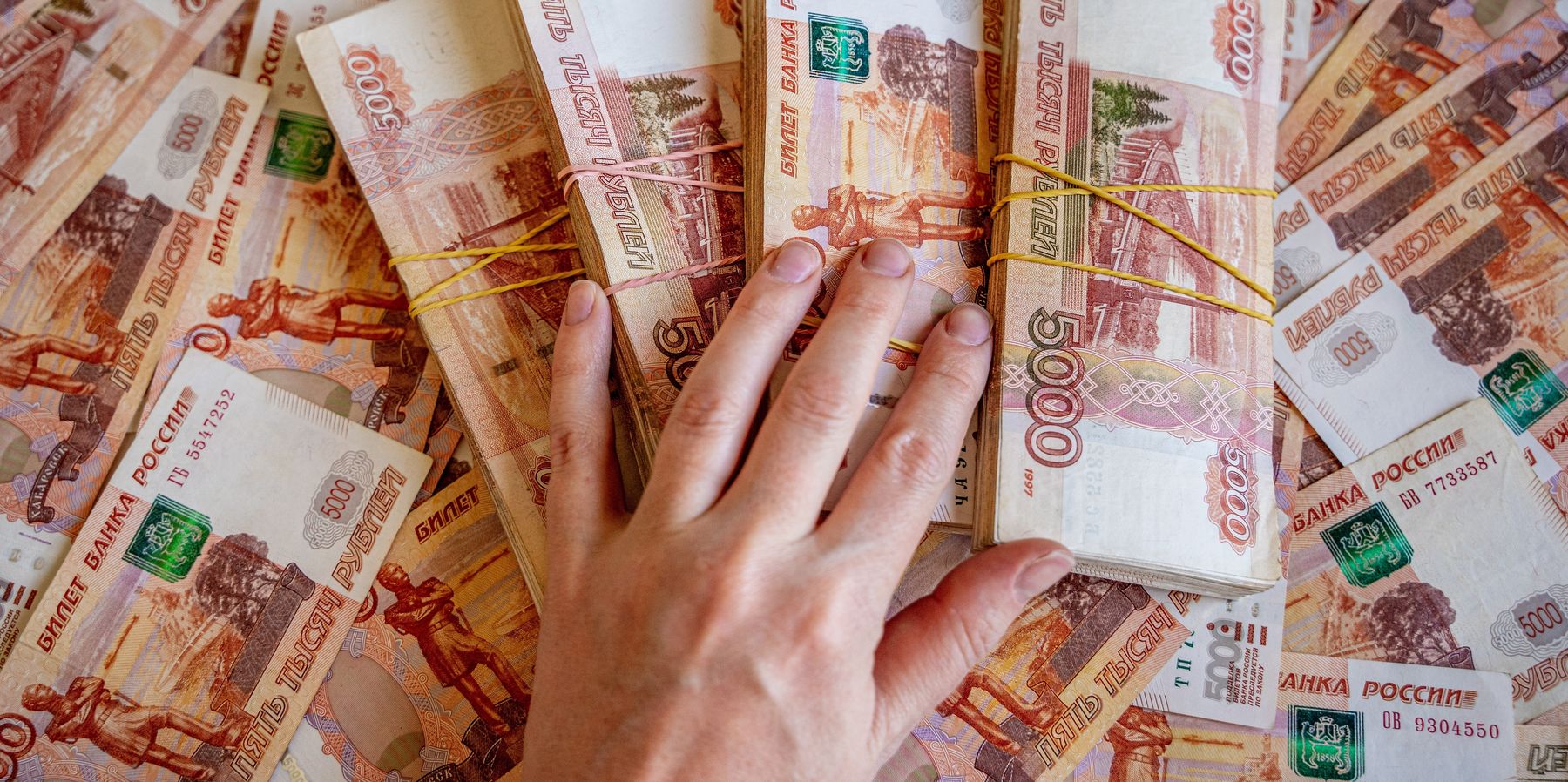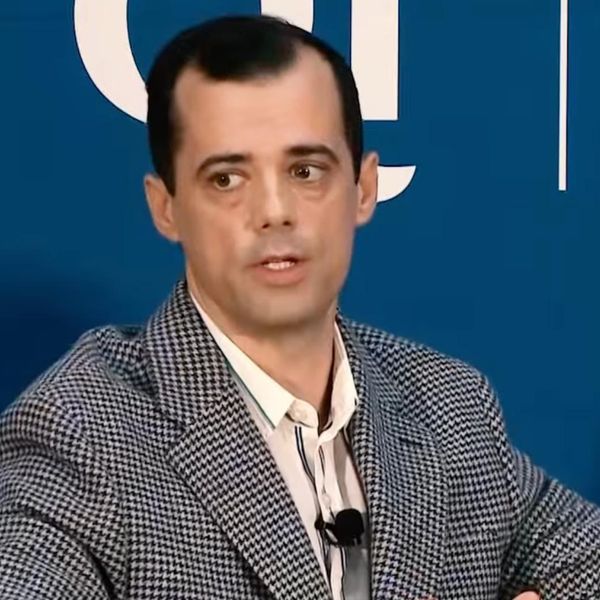In an article in Politico, Dan Fried, Anders Aslund and Kurt Volker argue for the European Union to speed up arrangements to unlock the $50 billion loan package that was approved at the G7 Summit in June. This suggestion is poorly conceived and risks repeating mistakes that paved the road to war in Ukraine.
The proposed arrangement would use the interest accrued on €200bn of frozen Russian assets held by Euroclear in Belgium, to repay loans amounting to a total of $50 billion provided by a syndicate of G7 Member States. Those loans would be made to Ukraine to fill the yawning gap in its budget at a time of war.
Fried et al, point out that this is a creative compromise that falls short of the full seizure of frozen Russian assets which the U.S., Canada and the UK would have preferred. They argue that the EU should “adopt a law prolonging the freezing of assets until Moscow had paid for its war against Ukraine in full.”
However, legislating to freeze Russia’s assets with such conditions attached de facto amounts to a permanent seizure of those assets. And it concerns me that this escalatory approach is similar to another advanced by Fried in 2015.
On March 19, 2015, the European Council aligned EU sanctions against Russia with the Minsk II Agreement, just five weeks after its signature. European sanctions against Russia would only be lifted when the last point of the Minsk II peace plan was implemented, at that time scheduled for the end of 2015.
This Minsk conditionality was Dan Fried’s brainchild while he was the U.S. coordinator for sanctions policy at the State Department, working hand in glove with Victoria Nuland. He enlisted the help of the Brits to land conditionality in Europe, regularly engaging senior colleagues at the Foreign Office in London. Having been locked out of the Normandy Format of peace talks on Ukraine in June 2014, the Brits gladly took up the cudgel of delivering Minsk conditionality with a round of shuttle diplomacy to Brussels and other Member State Capitals to lobby for it. It worked.
Unlike U.S. sanctions, EU sanctions are renewed by unanimous agreement every six months or so. The spring of 2015 was the time when EU sanctions seemed most likely to collapse, with southern European states expressing concern about economic blowback, and with Eurozone Ministers focussed on resolving the Greek debt crisis.
However, conditionality de facto set European sanctions against Russia in stone; no Member State could vote them down without evidence that the Minsk II agreement had been implemented. But the notion of full implementation by Russia was a chimera, confected by Fried and the Foreign Office.
A core article of the Minsk II agreement required negotiations on special status for the Donbas. A Chatham House paper illustrates neatly why Ukraine never wanted to drive forward with special status for the Donbas, because of widespread resistance to the idea in non-occupied parts of Ukraine. Indeed, on 1February 1, 2022, former Ukrainian Foreign Minister Dmytro Kuleba comprehensively rejected the idea of special status.
On the eve of war, the Minsk II agreement had been dead in the water for seven years. Yet, wide-ranging sanctions against Russia had remained because of the conditionality agreed in 2015. Indeed, Ukraine lobbied hard for additional "pre-emptive" sanctions, before the first shots were fired.
Few in the West recognize the extent to which sanctions, tied to Minsk II, fueled a sense of injustice in Russia that the West would punish it come what may, and contributed to Putin’s decision to invade Ukraine.
That’s why seizing Russia’s sovereign assets sine die is a bad idea that would repeat the same mistake the West made with Minsk conditionality. With sanctions locked in, there was no incentive for Russia to advance peace in Ukraine. With no prospect of the return of even a share of their sovereign capital, any incentive for Russia to lay down arms and negotiate will disappear.
Imposing a legally questionable punishment on Russia would also elevate the wider risk to the credibility of EU capital markets that the Head of Euroclear warned of in February. It would accelerate the longer-term shift by developing nations towards membership of BRICS and away from the Dollar and Euro for trade, foreign exchange and investment, as highlighted recently by the Asia Times.
Recent events on the battlefield remind us that any end to war in Ukraine will likely emerge from a stalemate and not a total Russian defeat. Ukraine and its Western supporters will not be able to impose a demand for reparations on Russia from a position of strength. And Russia has made it clear that it does not see itself as responsible for meeting the cost of post-war reconstruction. Russia’s Ambassador to the UK told me that directly last year.
Despite the terrible human cost, Russia has the resources, manpower, and material to continue fighting without the need for external funding support. Ukraine does not, and hence the scramble for this poorly conceived G7 loan arrangement.
And herein lies the rub. Martin Sandbu, in a piece in the Financial Times on September 1, explained that the very need for this type of loan for Ukraine betrays “an unseemly quest for alternatives to western taxpayer funding.” Western nations are struggling to justify continued financial and military support to Ukraine against a growing domestic backlash, particularly in European countries like Germany and France.
Despite considerable inflows of aid since war began, Ukraine has nevertheless borrowed around $40 billion each year. Debt is nearing 100% of GDP and, despite a recent restructuring of $20 billion the country teeters on the brink of a sovereign default.
Fried et al, illustrate a trenchant fixation in the West on punishing Russia at all costs. But creating a loan on the basis that the G7 shouldn’t pay, in the knowledge that Russia won’t pay, will merely prolong the war and pile more economic and human misery on Ukraine.
A more sensible, longer-term economic plan for Ukraine is needed, and that must surely start with a long-overdue ceasefire.
- Why seizing Russia's assets would be a gift to Beijing ›
- Seizing Russian assets: A feel good bill that will absolutely boomerang ›
- West confirms Ukraine billions funded by Russian assets | Responsible Statecraft ›
- Europe's latest seized Russian asset scheme is as dumb as ever | Responsible Statecraft ›
- Europe could be on the hook for $160 billion to keep Ukraine afloat | Responsible Statecraft ›
















